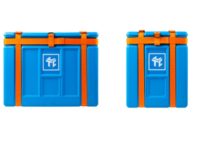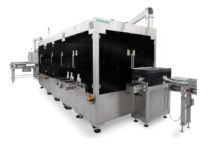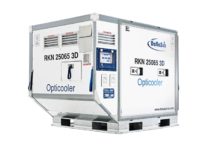Nutrition and health bars are stealing market share from the category leading snack and cereal bars in part because they tie into the health and wellness trend dominating many consumers’ purchasing decisions in a way snack and cereal bars don’t, according to research analysis from Synergy Flavors.
Within the snack and nutrition bar category, snack and cereal bars still take the lion’s share of sales, accounting for 60% of sales worth $3.3 billion in 2013, according to Synergy. But, it notes, this is down 8 percentage points from 2011, with nutritional and health bars making up the difference in 2013.
“Nutritional/health bars grew 34% between 2011 and 2013, reaching $2.2 billion and 39.6% of share. This shift reflects the popularity of nutritional bars, driven by an expanding number of nutritional bar attributes, such as snacking, meal replacement, sweet/salty indulgence, workout fuel and so on, on top of expectations that these products will provide nutrition and good taste,” according to synergy
Some of this growth also is expanding the bar category overall. Sales growth of snack and nutrition bars climbed 2.9% to reach $5.5 billion in 2013 compared to the previous year, according to data from Mintel, which projects the category “will continue to grow at this moderate pace into 2018, when sales are expected to reach $6.2 billion.”
A main driver of nutrition bar sales has been the positioning of the bars as fuel for athleticism, Synergy notes. For example, it says, CLIF markets primarily to active people by sponsoring extreme athletes and chronicling how their diet impacts performance. Kashi also sponsors athletes, such as 2014 Olympic cross-country skier Kikkan Randall.
Claims that nutrition bars have no or reduced allergens or are gluten-free is another category sales driver, according to Mintel data. In 2013, 61% of bars launched claimed to have low, no or reduced allergens or be gluten-free – up 30.2% from launches in 2012. Other top claims seeing strong growth in product bar launches in 2014 include low, no or reduced sugar (42.1% of launches), high or added fiber (34.2% of launches) and no additives or preservatives (18.4% of launches).
Launches of high protein bars also are on the rise and expanding the overall category’s sales, according to data from Mintel’s Global New Products Database. Launches in this segment increased 126.9% from 26 in 2012 to 59 in 2013, and data suggest launches in 2014 will exceed this.
Push bar sales higher with consumer education
Synergy says manufacturers can further increase bar sales through increased consumer education and exposure.
For example, by better explaining the value of nutrition bars, manufacturers can overcome price, which is a major obstacle for bar sales. Mintel data found 42% of people who did not buy nutrition bars believed they were overpriced.
“This suggests that more expensive brands can do more to show how their products represent value in some other way, such as using natural or organic ingredients or being more convenient than other brands,” To expose more consumers to nutrition bar brands, manufacturers should offer more in-store sampling, Synergy suggests. It adds manufacturers of bars with flavors “inspired by sweet treats” could do a side-by-side sampling comparison of the nutrition bar and its snack or candy bar equivalent and use the event as “an opportunity to explain the nutritional advantage offered by the athletic bar compared to the competitive options.”
Finally, Synergy suggests bar makers explore line extensions such as portion-controlled packages and formulas with fewer calories than needed by serious athletes in order to court non-athletes interested in bars for convenience.


























